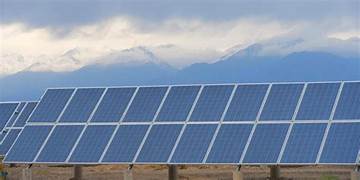In a significant move towards a renewable future, the world’s renewable energy industry achieved record growth in 2024 as solar and wind energy spearheaded the green revolution. Renewable capacity grew by 585 gigawatts (GW) in 2024 at a growth rate of 15.1%, as per the International Renewable Energy Agency (IRENA), to reach a capacity of 4,448 GW.
China Leads the Charge
China led capacity additions, adding almost 374 GW and nearly 64% of global growth. This was led primarily by huge investments in solar photovoltaic facilities. The Group of Seven (G7) nations together represented 14.3% of new capacity, while regions such as Central America and the Caribbean contributed a mere 3.2%, indicating long-standing regional imbalances in the use of renewable energy.
Solar and wind power topped the renewable mix with 96.6% of net growth in 2024. Solar capacity alone grew by an astonishing 32.2%, proving its ascendancy to competitiveness with conventional fossil fuels. Wind power also grew immensely, with offshore wind farms becoming increasingly popular as a result of technological innovations and favorable policies.
Challenges in Meeting 2030 Targets
Despite these staggering achievements, IRENA warns that progress is too sluggish to meet the 11.2 terawatts (TW) of renewable capacity by 2030 worldwide. To reach this goal, it would need a 16.6% annual growth rate, slightly above the most recent rates. IRENA Director-General Francesco La Camera emphasized calling for closing geographical gaps and redoubling efforts in order to achieve the upcoming 2030 target.
Economic and Environmental Impact
The economic effect of this renewables wave goes deep. OECD and UN Development Programme research indicates that ambitious climate action, including renewable energy investment, would add 0.23% to global GDP by 2040. Developed countries would increase GDP per capita by 60%, developing countries by 124%, and could potentially lift 175 million out of poverty by the end of the decade.
But there are barriers. Fossil fuels are still being funded, and policy action needs to be employed to channel capital into renewable energy. Robust climate policy and international collaboration are needed to break down structural barriers and facilitate inclusive transformation towards renewable energy.
With the world at a crossroads, the boom in renewable energy is a silver lining. Continued effort and joint action must be made to capitalize on this wave, close regional divides, and create a sustainable, equitable energy future.

